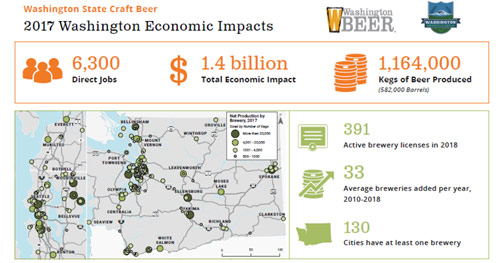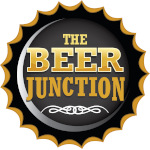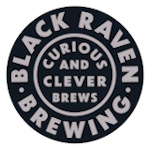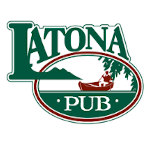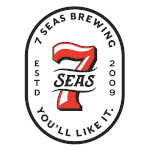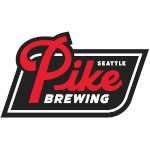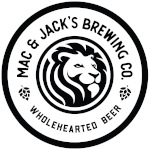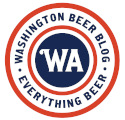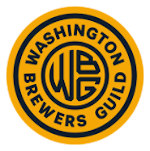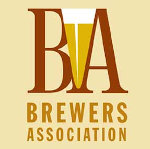The result of a recent report shows that the brewing industry contributed $1.4 billion to the state’s economy in 2017. The industry provided jobs for 6,300 people, directly. The report was conducted by Community Attributes Inc. and distributed by the Washington Beer Commission.
These are among the top-level highlights from the report. You can see, or download, the complete report below.
Size Matters
Depending on who you ask, California is the only state with more breweries than Washington. However, the vast majority of them are very small. Simply put, Washington is chock full of small breweries. Nearly 90 percent of the state’s breweries produced 2,000 barrels or less in 2017.
- The majority of breweries are small, with two-thirds of active breweries producing fewer than 500 barrels (or 1,000 kegs) in 2017.
- Slightly more than half of all net production came from the eight largest breweries in the state.
- More than one-third of net production came from the four largest breweries in 2017 (Elysian Brewing, Georgetown Brewing, Fremont Brewing, and Mac and Jack’s Brewing).
- Statewide, only 30 breweries produced at least 2,000 barrels in 2017.
- Roughly one-fifth of Washington’s breweries produced between 500 and 2,000 barrels.
- More than one-third of Washington’s breweries produced less than 500 barrels.
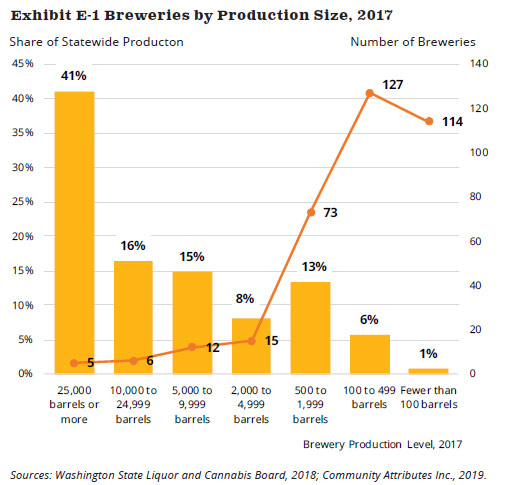
Growth Continues
Like the nation overall, the number of breweries in Washington has grown substantially in recent years. Much of this growth occurred over the past 10 years. In the autumn of 2018, there were 391 breweries operating in Washington. Today there are over 400.
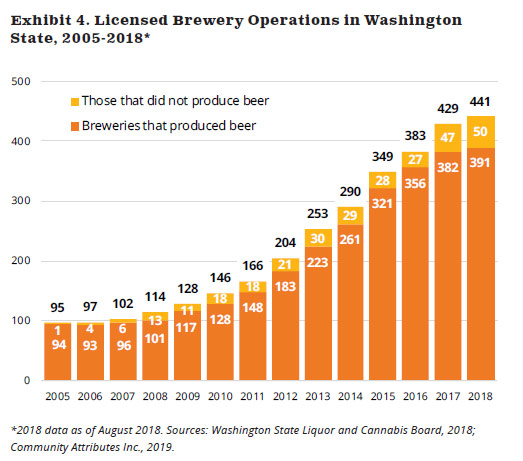
The growth numbers in terms of production volume have also trended upwards, as you would expect.
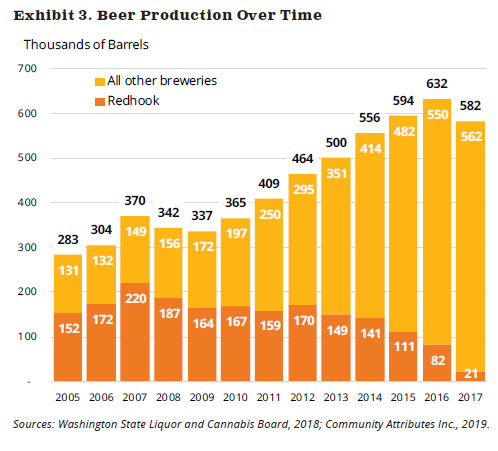
As you can see in the chart above, the overall trend was upward, with a dip in 2017 because Redhook moved its production from Woodinville to Portland, Oregon. Otherwise, as Redhook’s number dropped, overall production increased. Likely, in 2019 the trend will continue.
Industry growth can also be measured in jobs. As the chart below shows, the industry added almost 5,000 jobs since 2005, even during the economic downturn ten years ago.
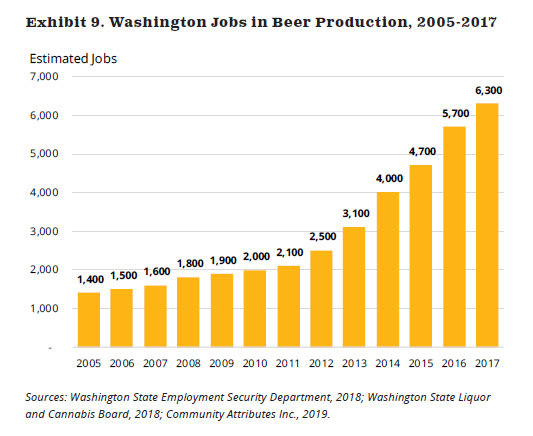
Type of Sales
The report also showed an interesting trend in how breweries are selling beer. Apparently, in the last few years, pint and growler sales are on the rise as keg sales and packaged product sales decline. I presume this is related to the increasing popularity of brewery taprooms.
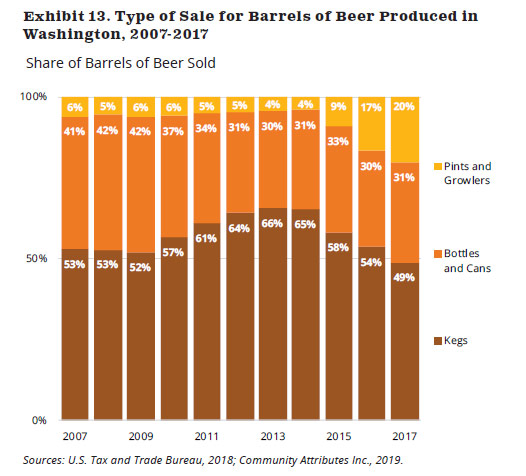
The Whole Enchilada
Here is the complete report. You can view, or download, the 24-page report in PDF format.

